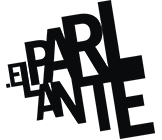By: Alfredo Cohen
Emotion is the impulse that induces action. Everyone knows that video is currently the format par excellence for transmitting emotions. Every day 3,000 million videos are seen on Youtube and the same amount is uploaded to Facebook every month. It is necessary to connect with new sensibilities, new languages and new times of citizens. Organizations or people who do not understand this paradigm shift will remain outside.
At elParlante we understand that this type of narrative allows us to tell stories and, even more importantly, that those who produce them are taken into consideration. For Rodríguez (2010), telling one’s own story allows recognition and therefore helps to build what we are, that is, it helps to have us and to be taken into account. Regardless of whether you are a group, a company or a citizen, explaining to be recognized is not a minor issue in a globalized and fragmented world.
In this sense, in elParlante we make two types of video:
- The participatory video As a result of our co-creation projects in which a group of people are sensitized and motivated to create a piece collectively that generates reflection / criticism / dialogue on a social theme that is significant to them. The videos resulting from this process will serve as pedagogical material so that the filmmakers themselves (young people, the elderly, women, students, teachers…) can sensitize the communities to which they belong.
“(The video) pressures, incites, seduces those who use it to undertake processes of symbolic creation. When you have a microphone in your hand or look at it through a video camera, the same technology encourages you to direct the microphone towards the environment, to look at the world through the viewfinder of the camera. Technology itself makes us artisans of sounds and images, of symbolic products, and it is precisely here where other ways of seeing the environment and imagining the future can emerge. That is, it is through the reconfiguration of signs from where collective imaginaries, alternative versions of territory and new utopias are generated to shape the future”. (Clemency Rodriguez, 2011: 46)
This is an example of the many participatory video projects carried out by elParlante. Barribook TV, made in 2012 in the district of Horta-Guinardó
- On the other hand, the videoof social interest is an audiovisual product where the script is constructed by the creative team of elParlante together with entities, foundations, associations, companies, cooperatives, collectives or professionals who need to explain, show or sell products, services or ideas with social interest. Although aesthetics and neatness are important, more than effective tricks, we are interested in telling stories well and telling content that might otherwise seem uninteresting. We have made a large number of videos that have served to systematize activities such as conferences, plays or exhibitions, raise awareness about a specific topic, make a call, increase the participation of like-minded people or get support for specific projects.
This is an example of a video made for the FEDAC Educational Foundation.
Through different projects, we have observed that the audiovisual can help us weave new realities to expose our own voice and thus, build an active citizenship while reaching more and more people.
If you would like to make a participatory or social interest video for yourself or your company/organization, do not hesitate to
contact us.
